VERY RARE! WWII Battle of Guadalcanal “CONFIDENTIAL” Henderson Field Operation Watchtower U.S. Pacific Theater Combat Map



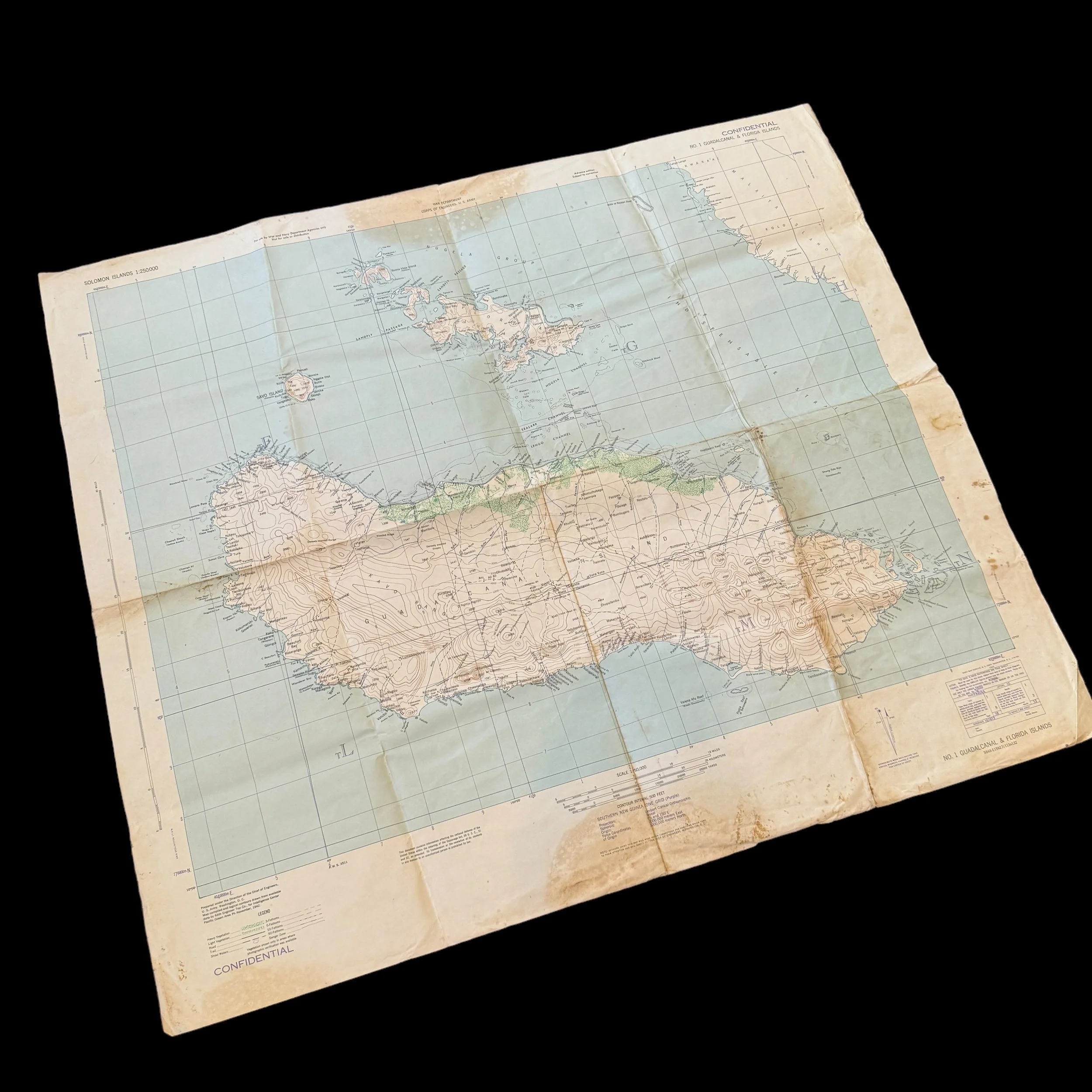

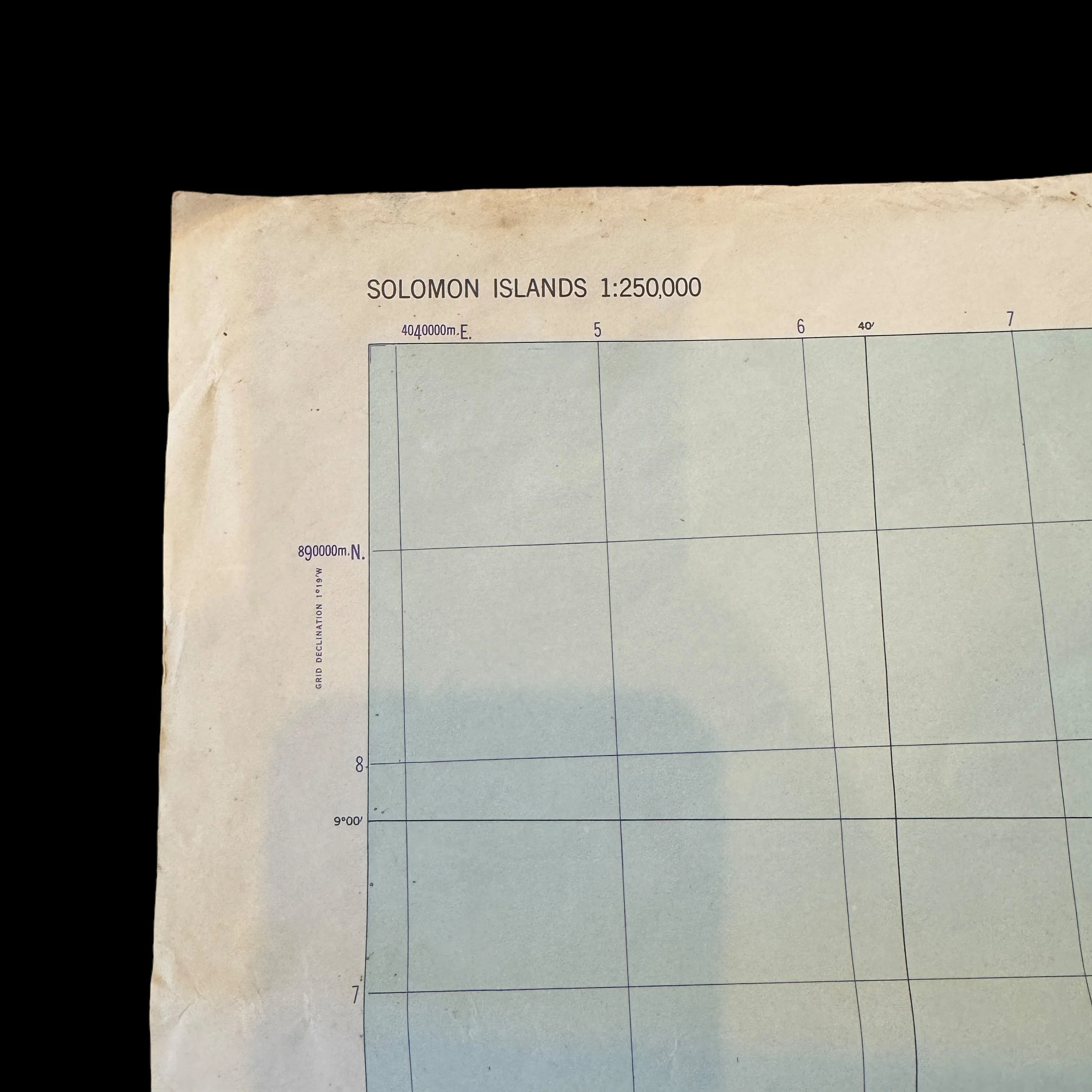
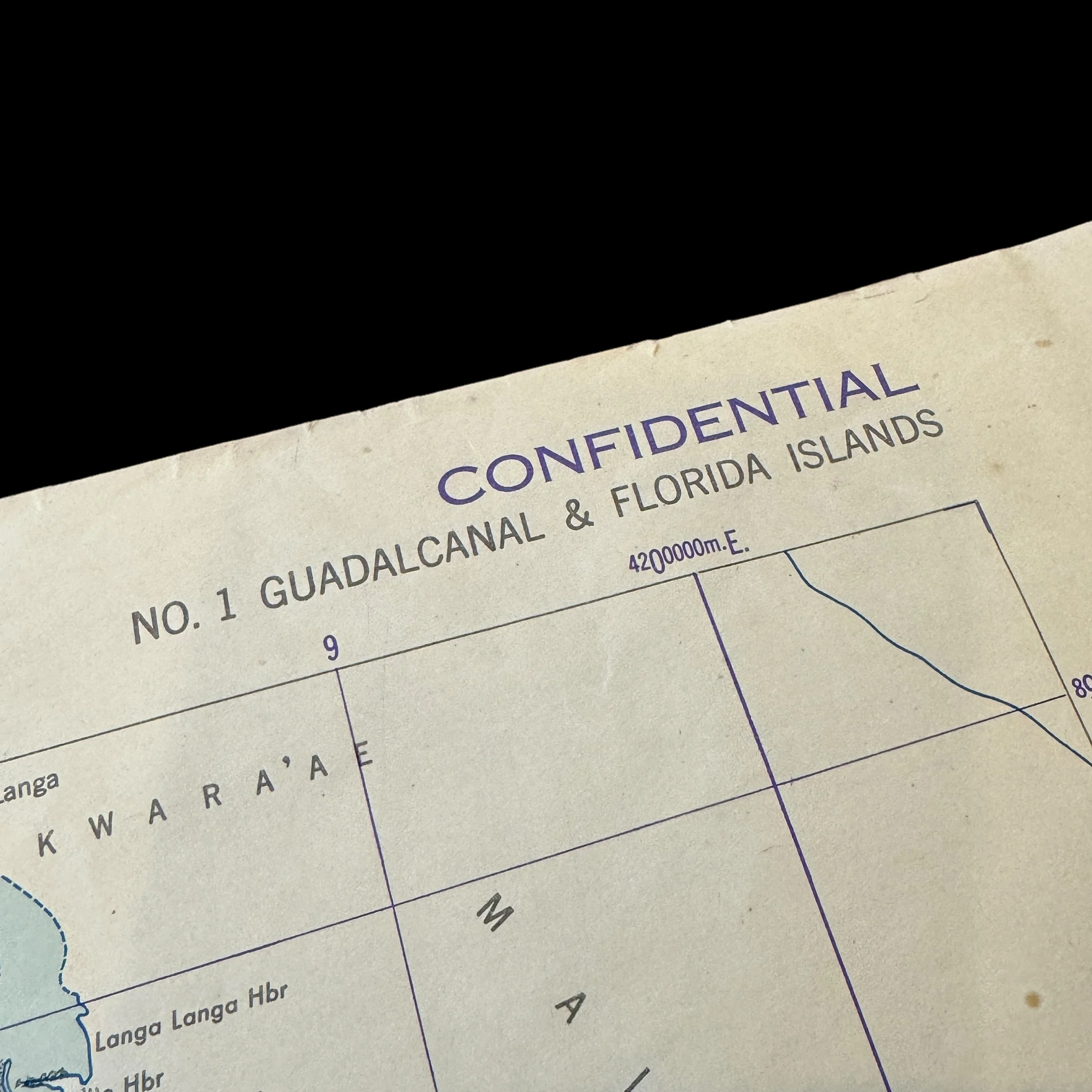
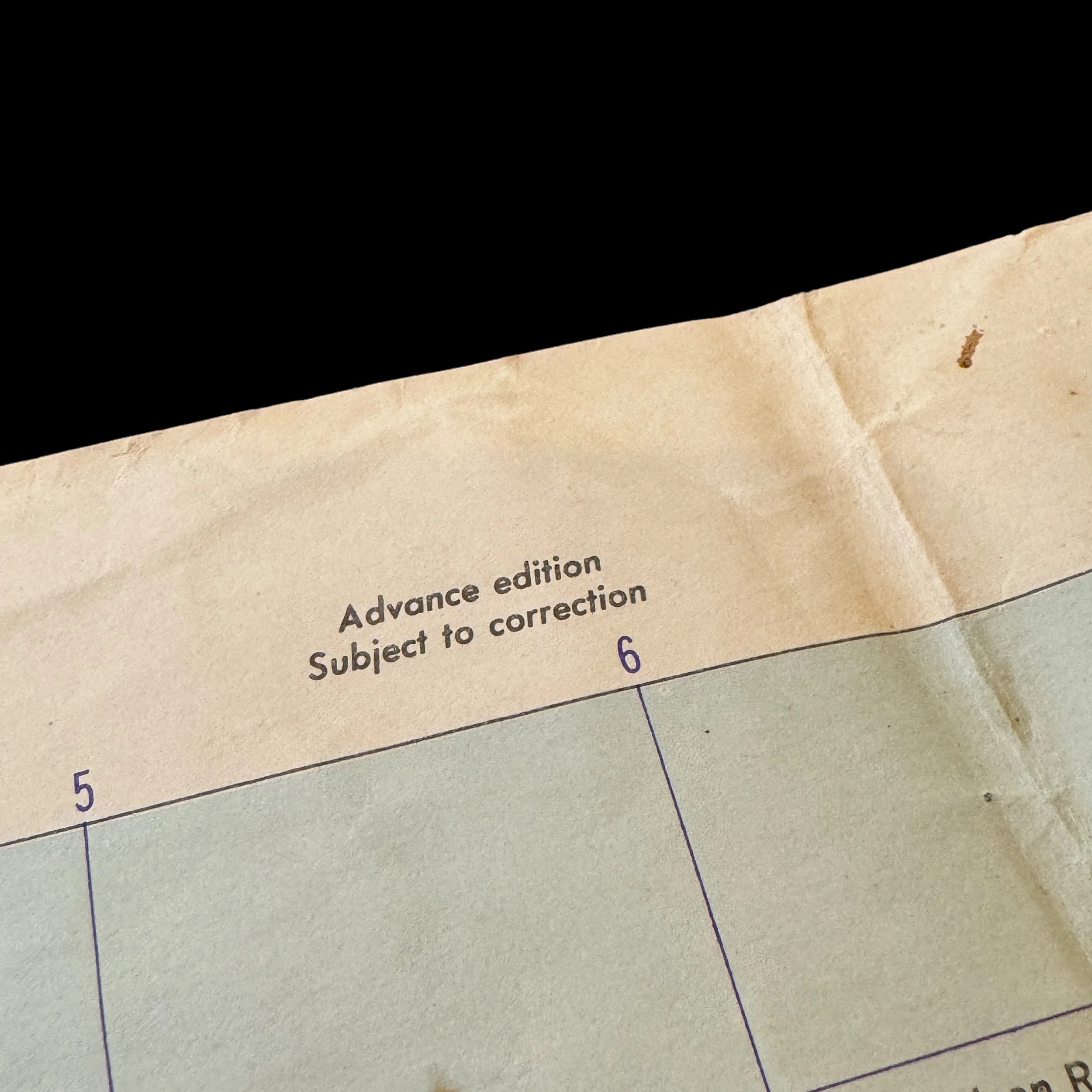

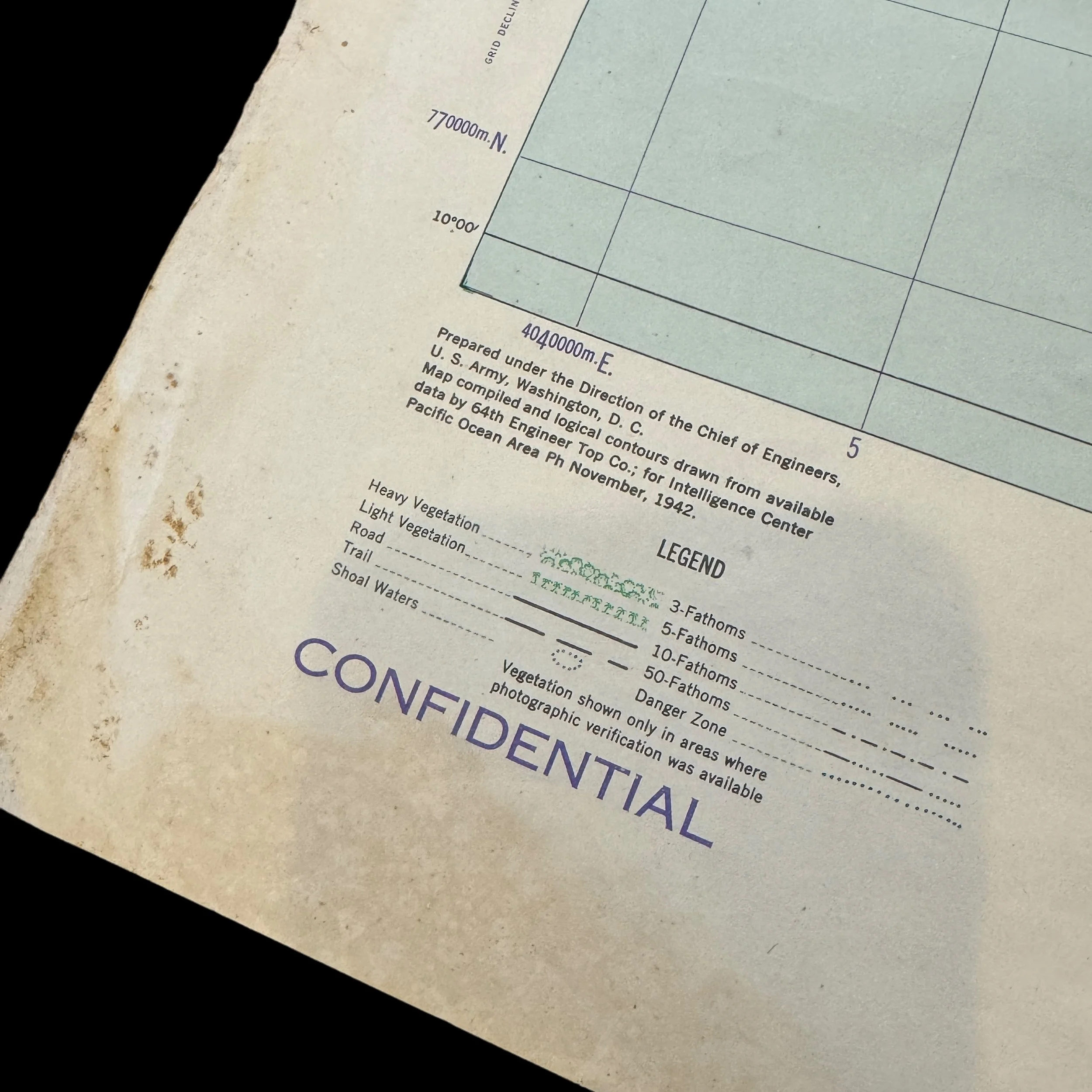
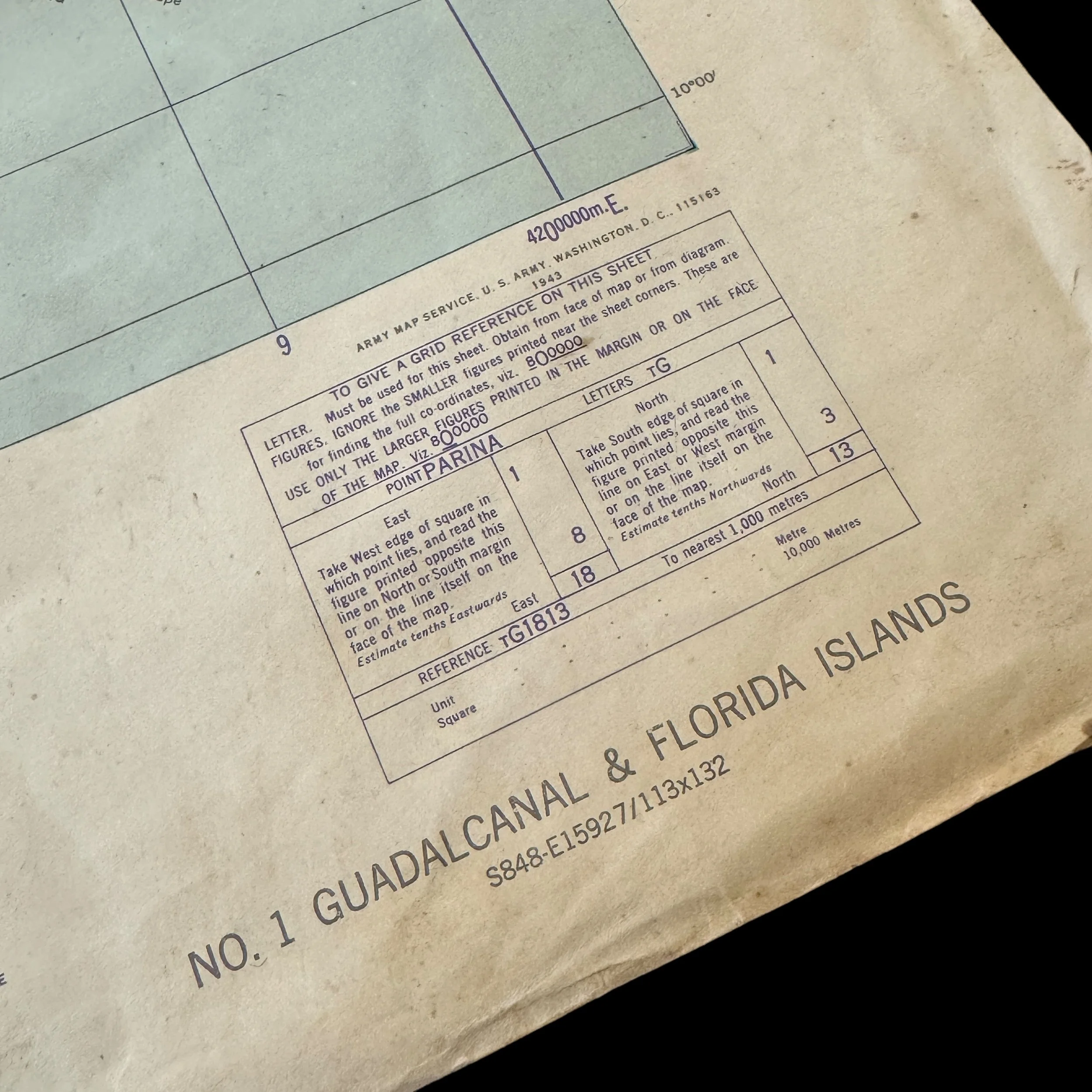
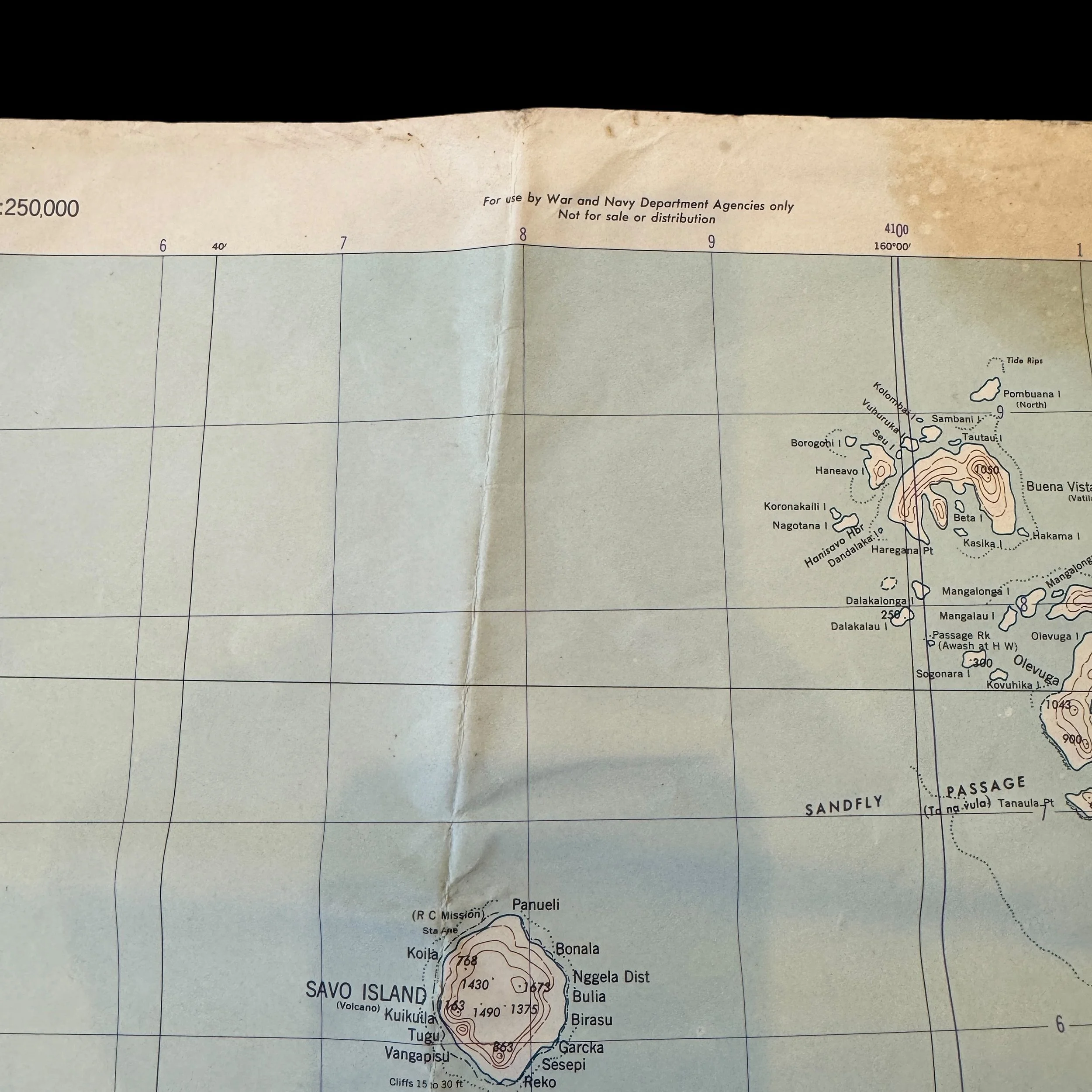


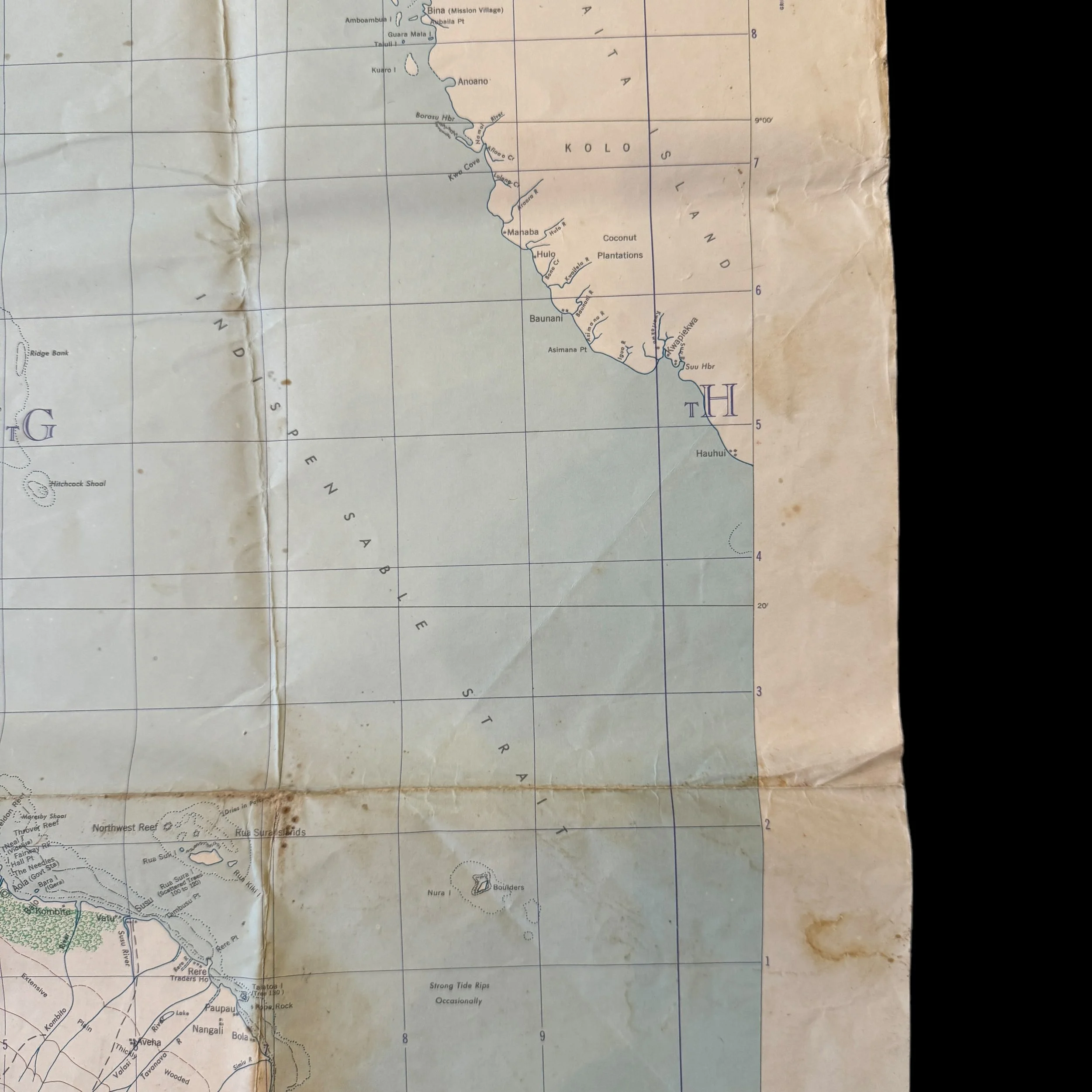

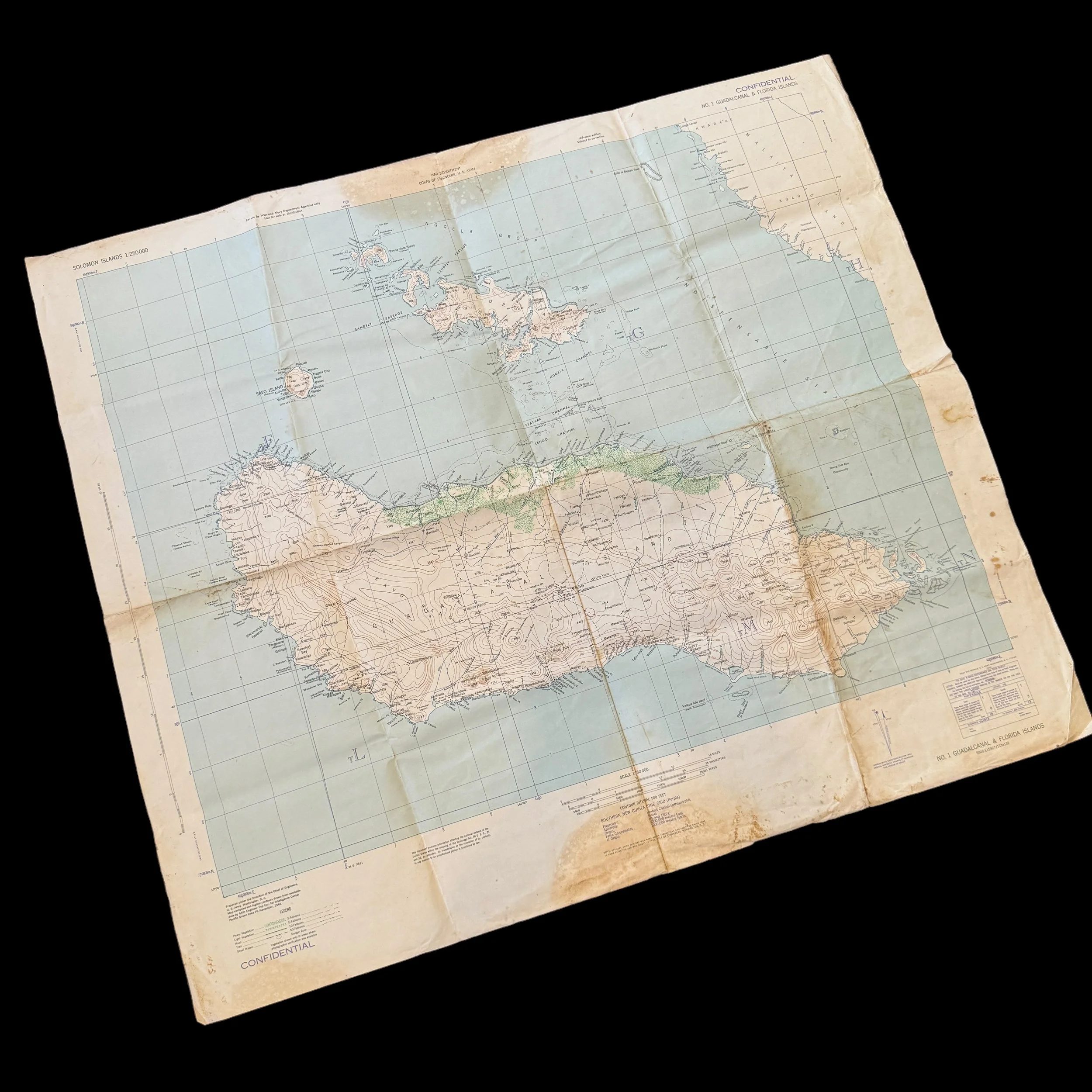
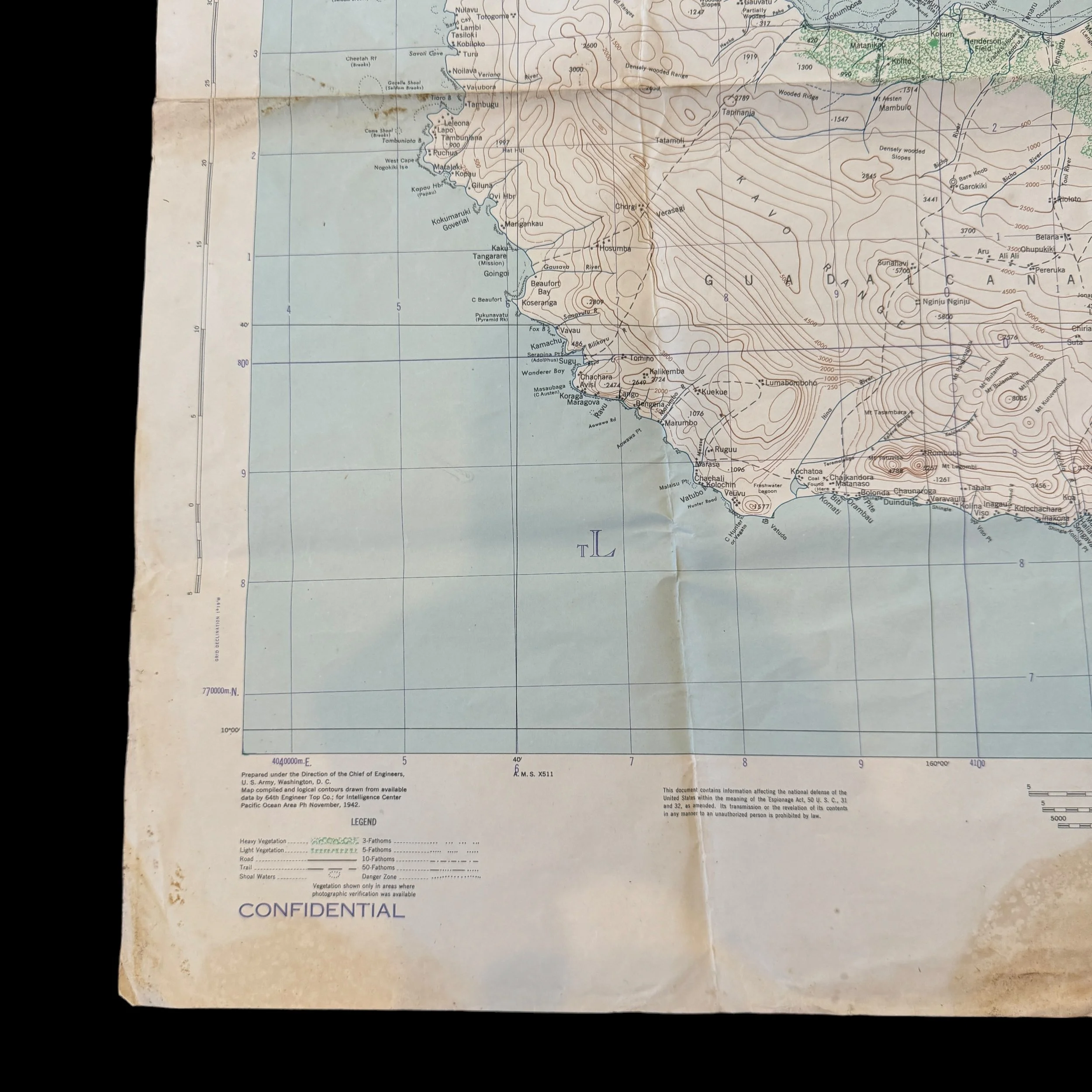
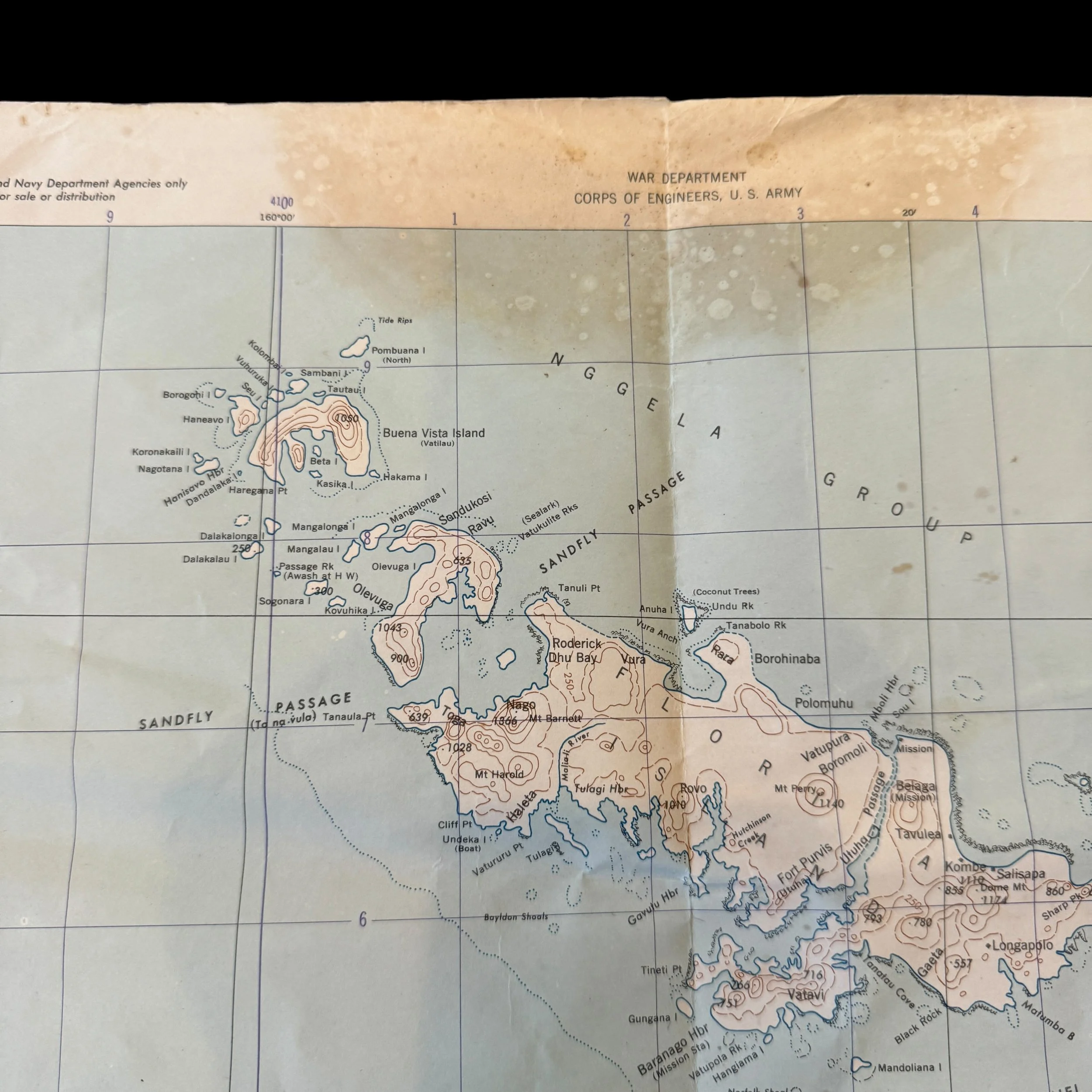
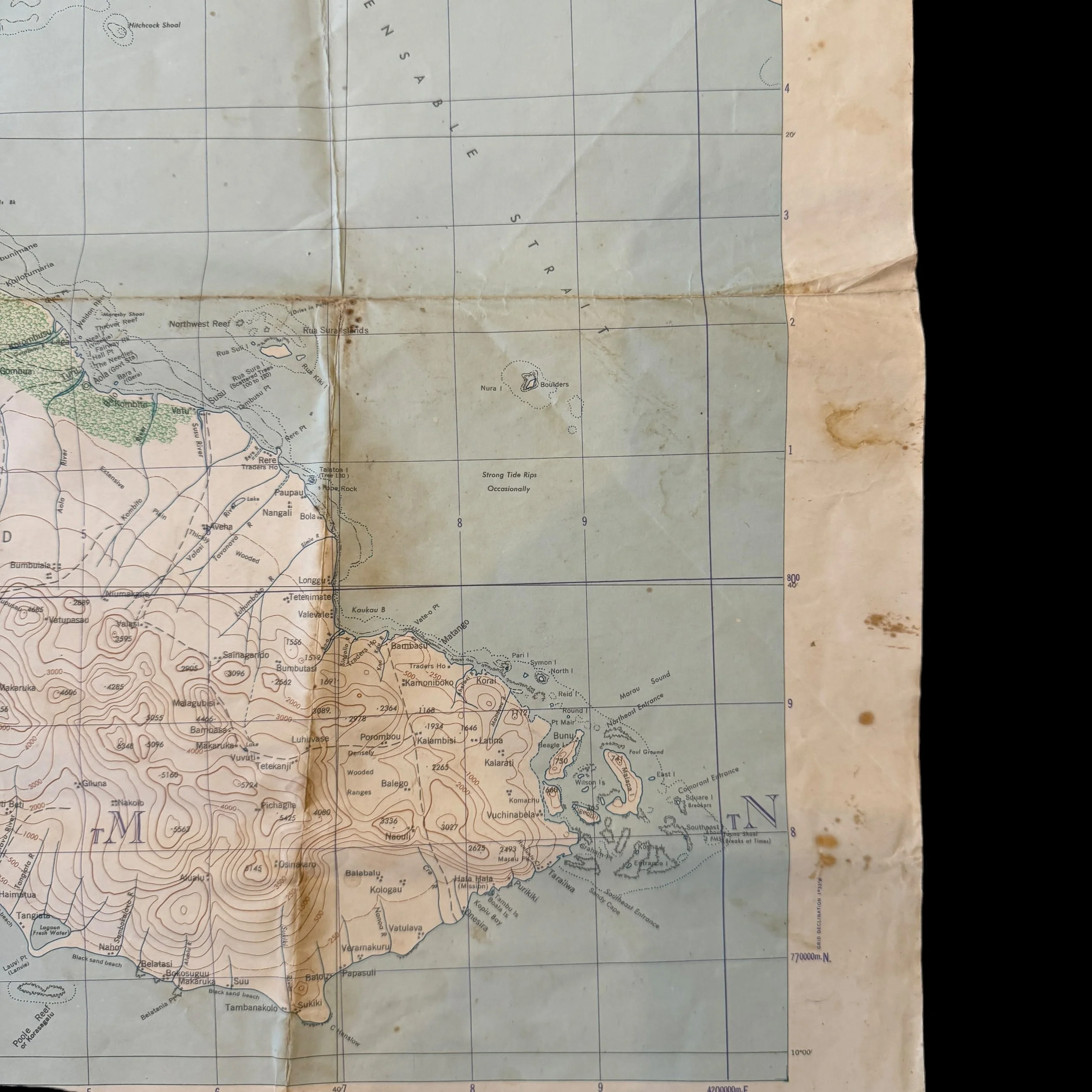
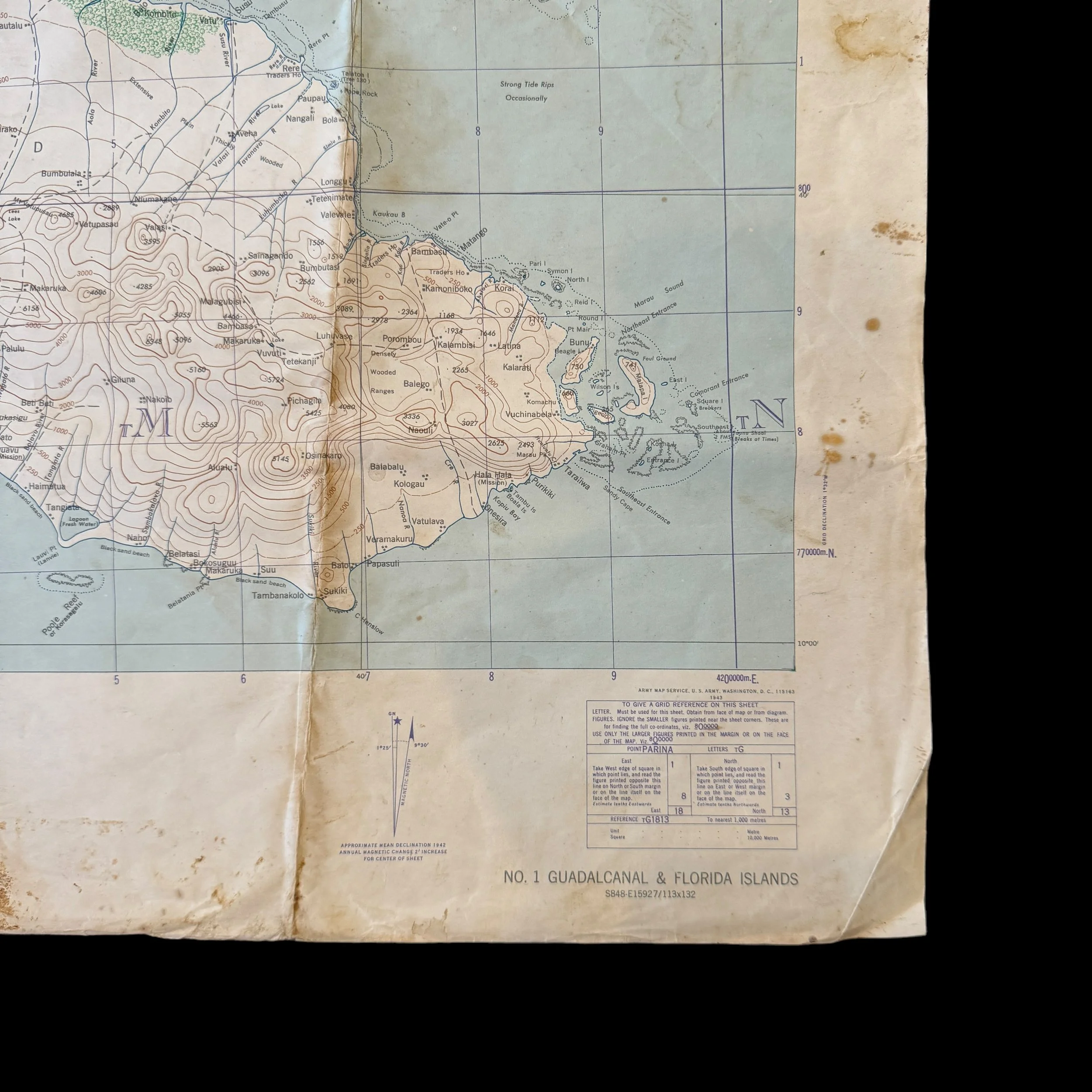





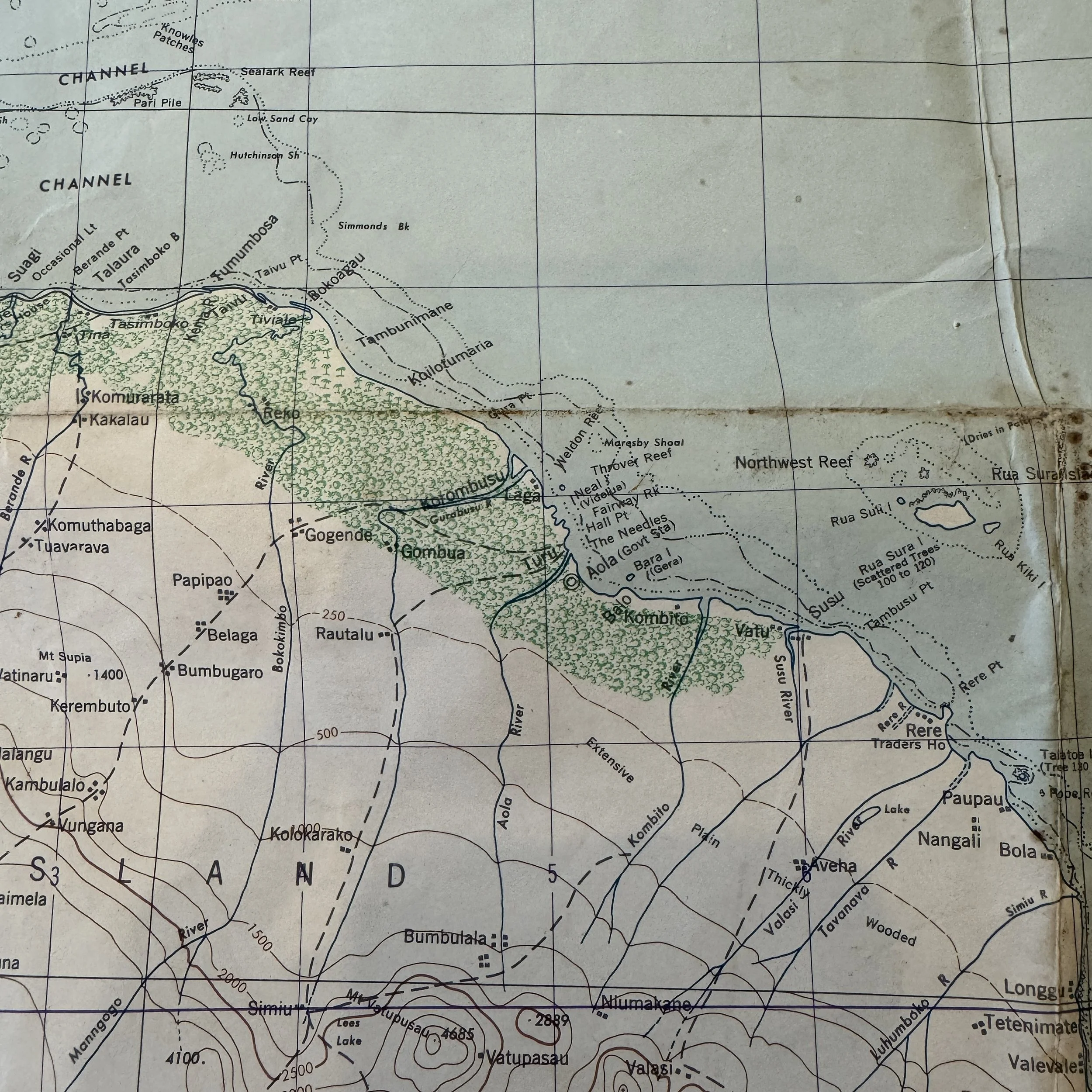
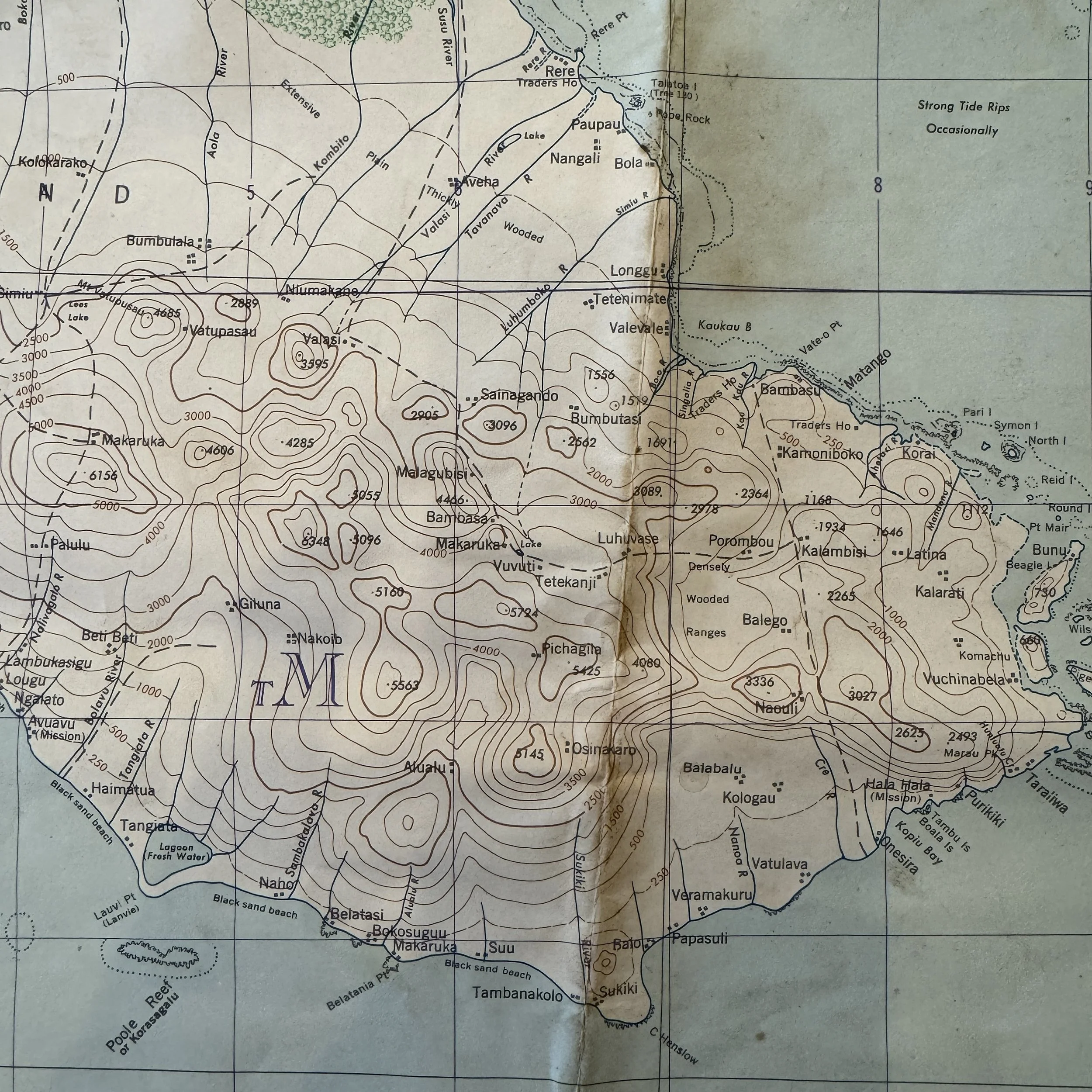
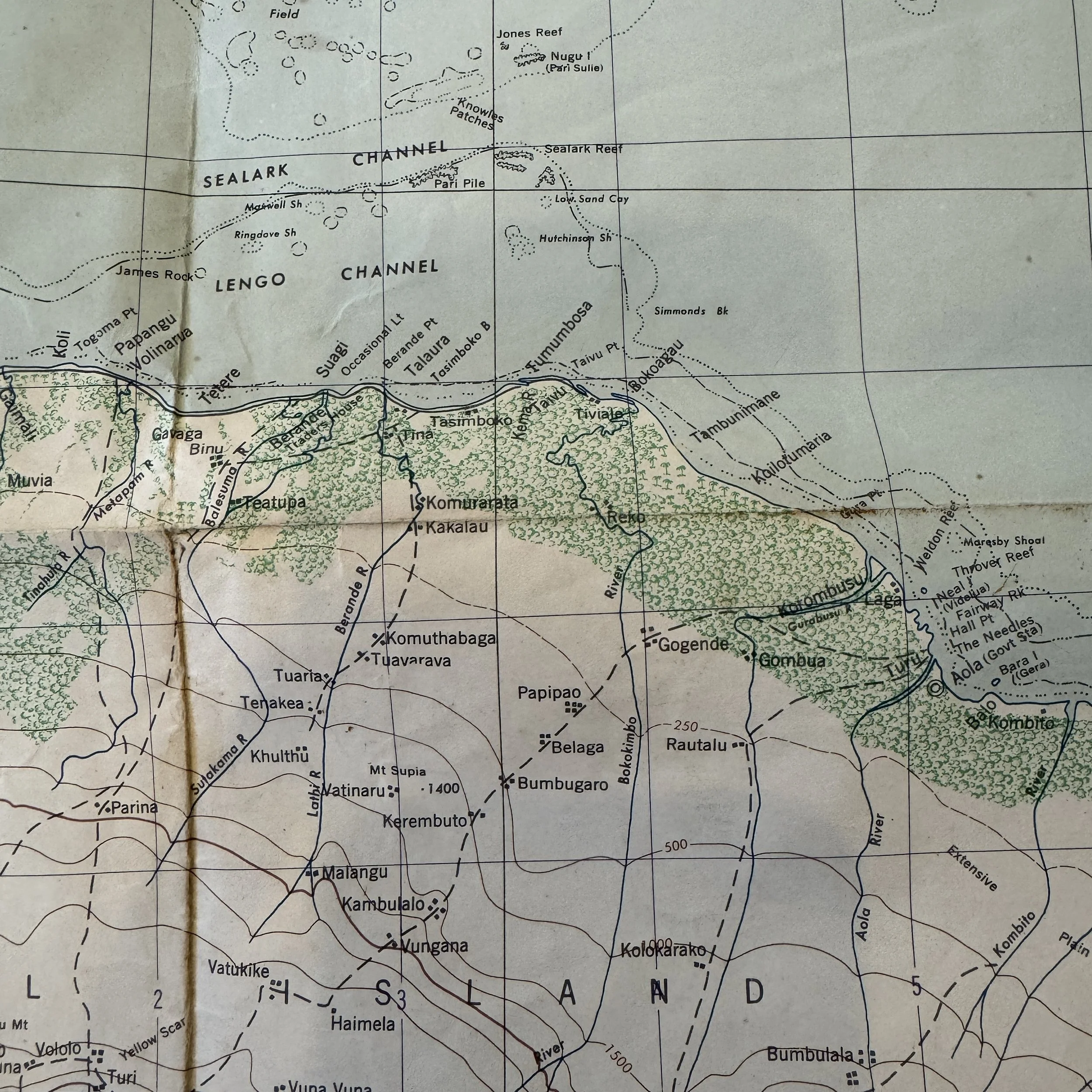




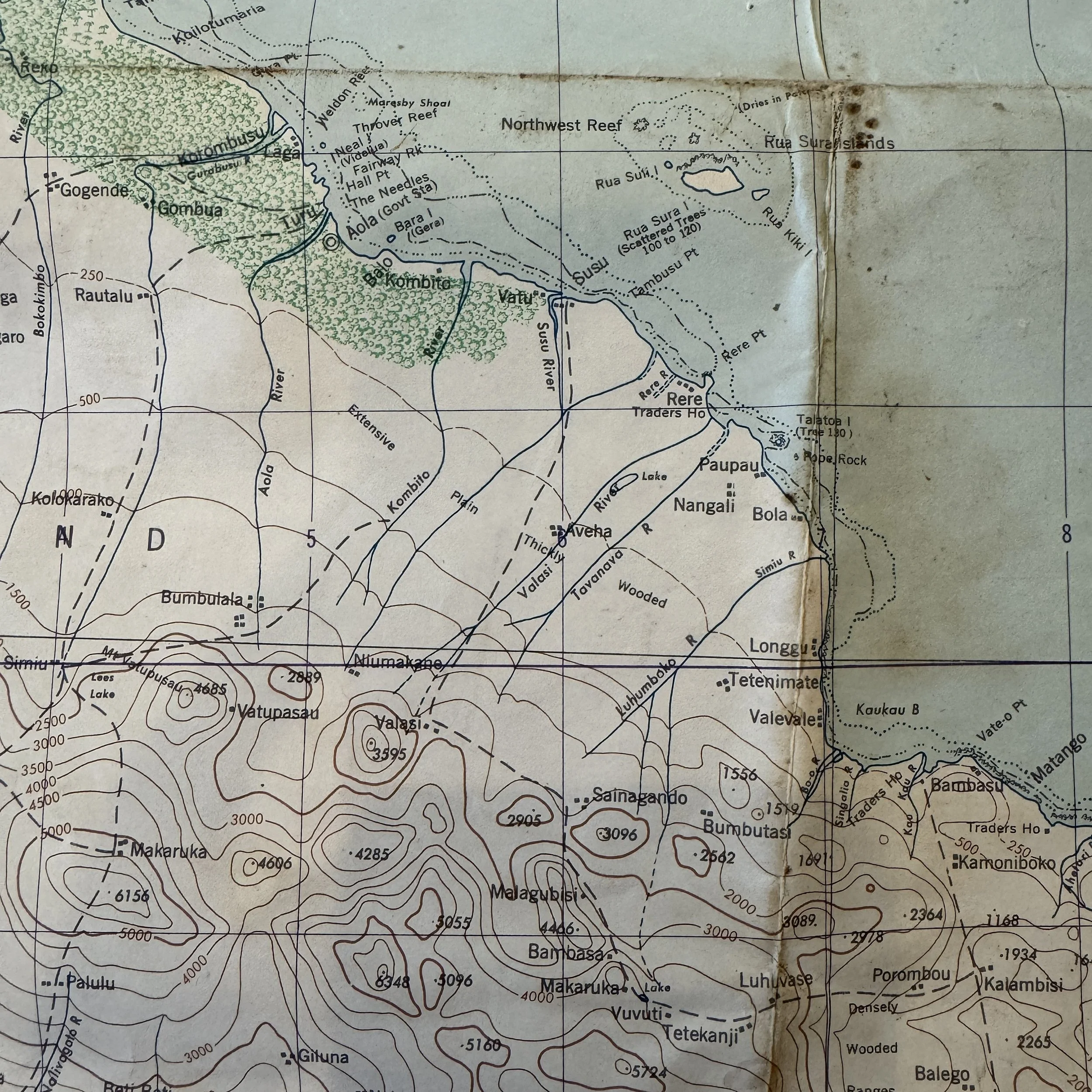

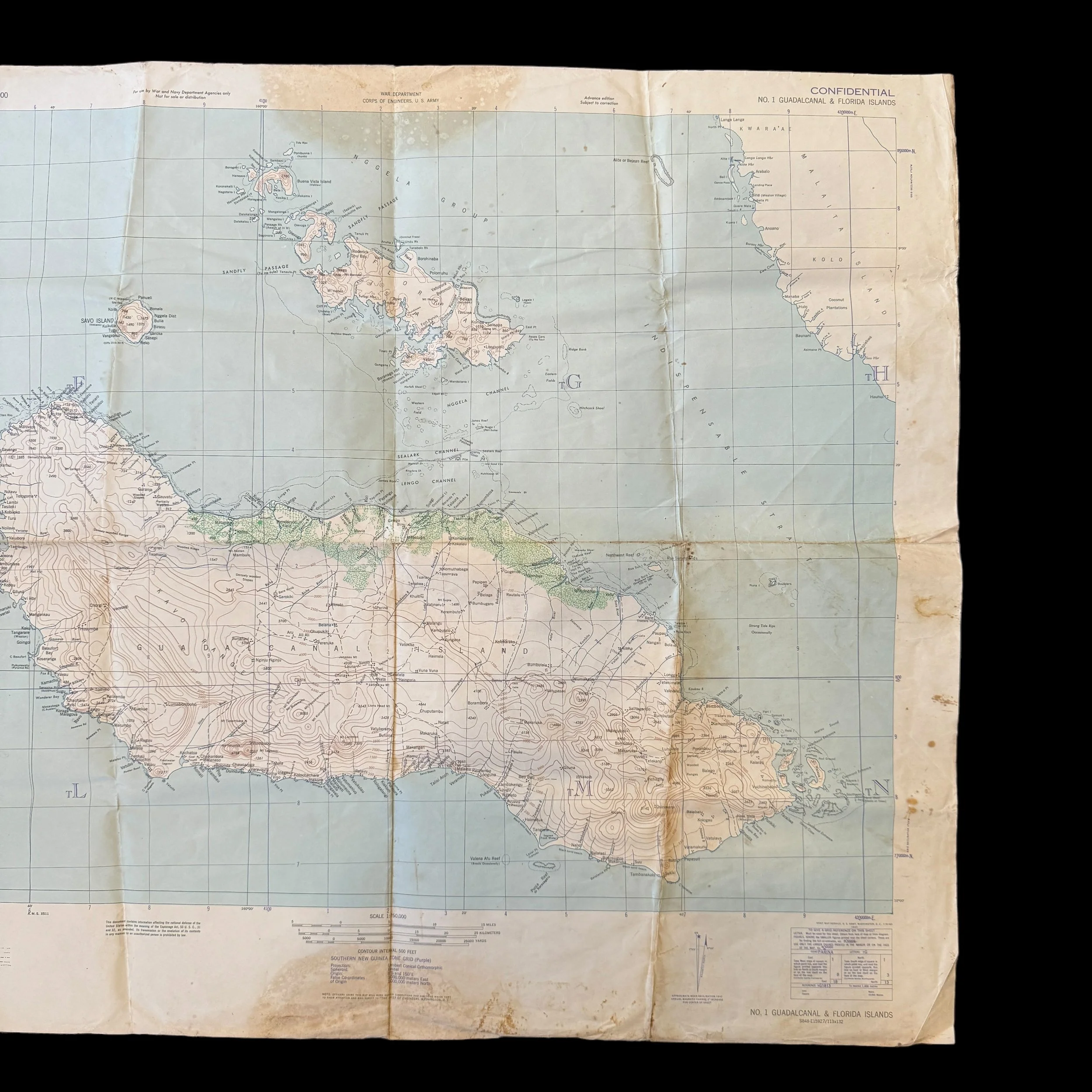
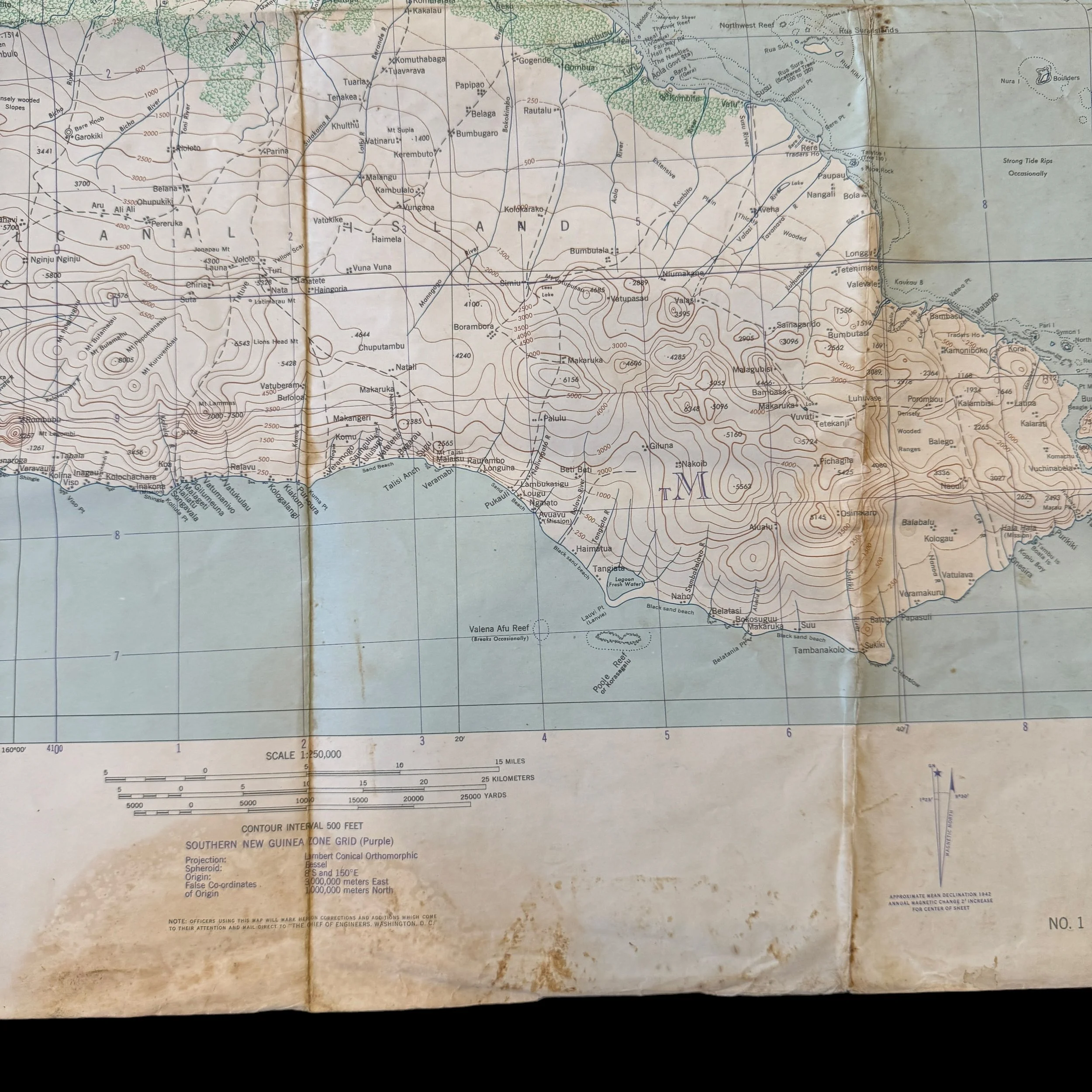
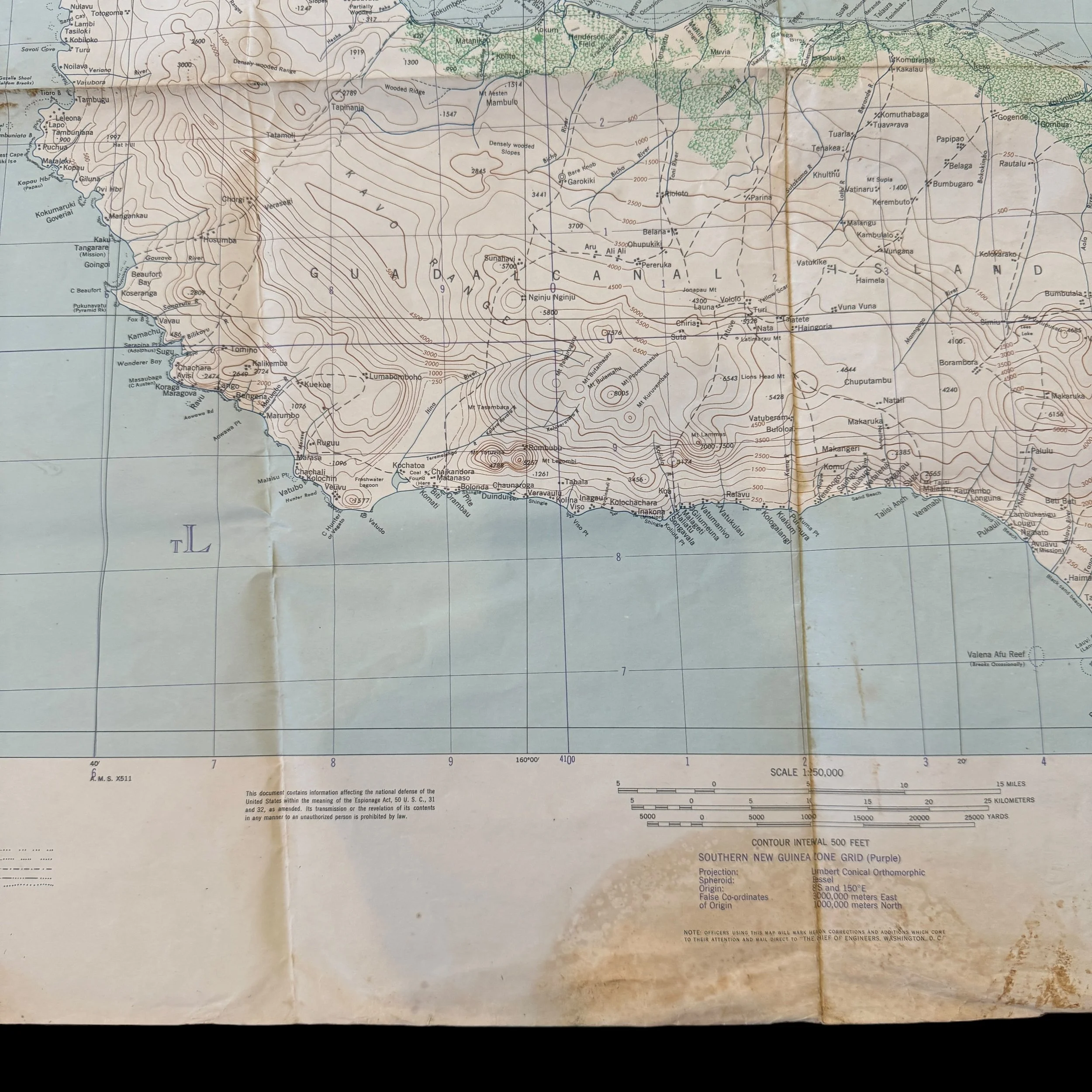


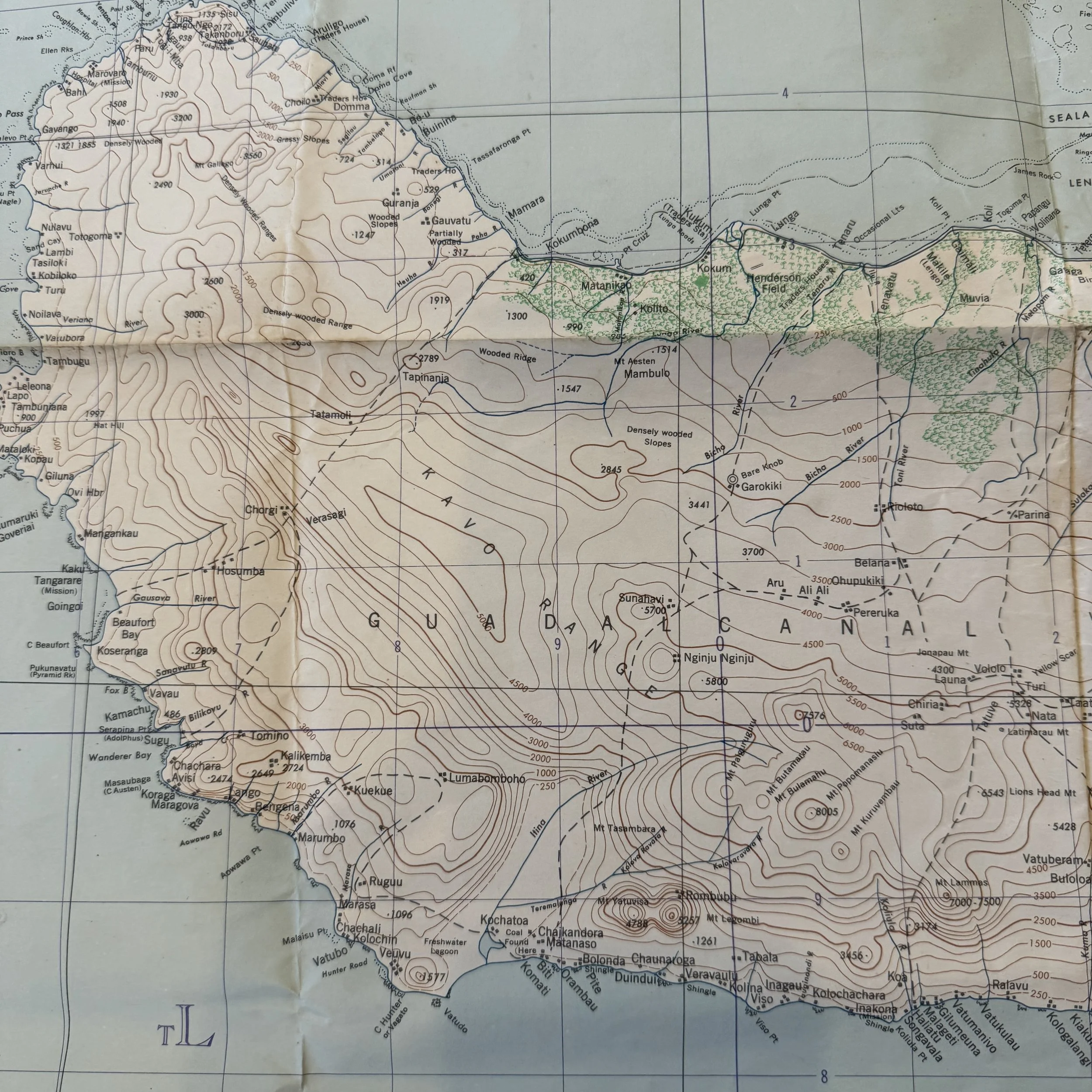
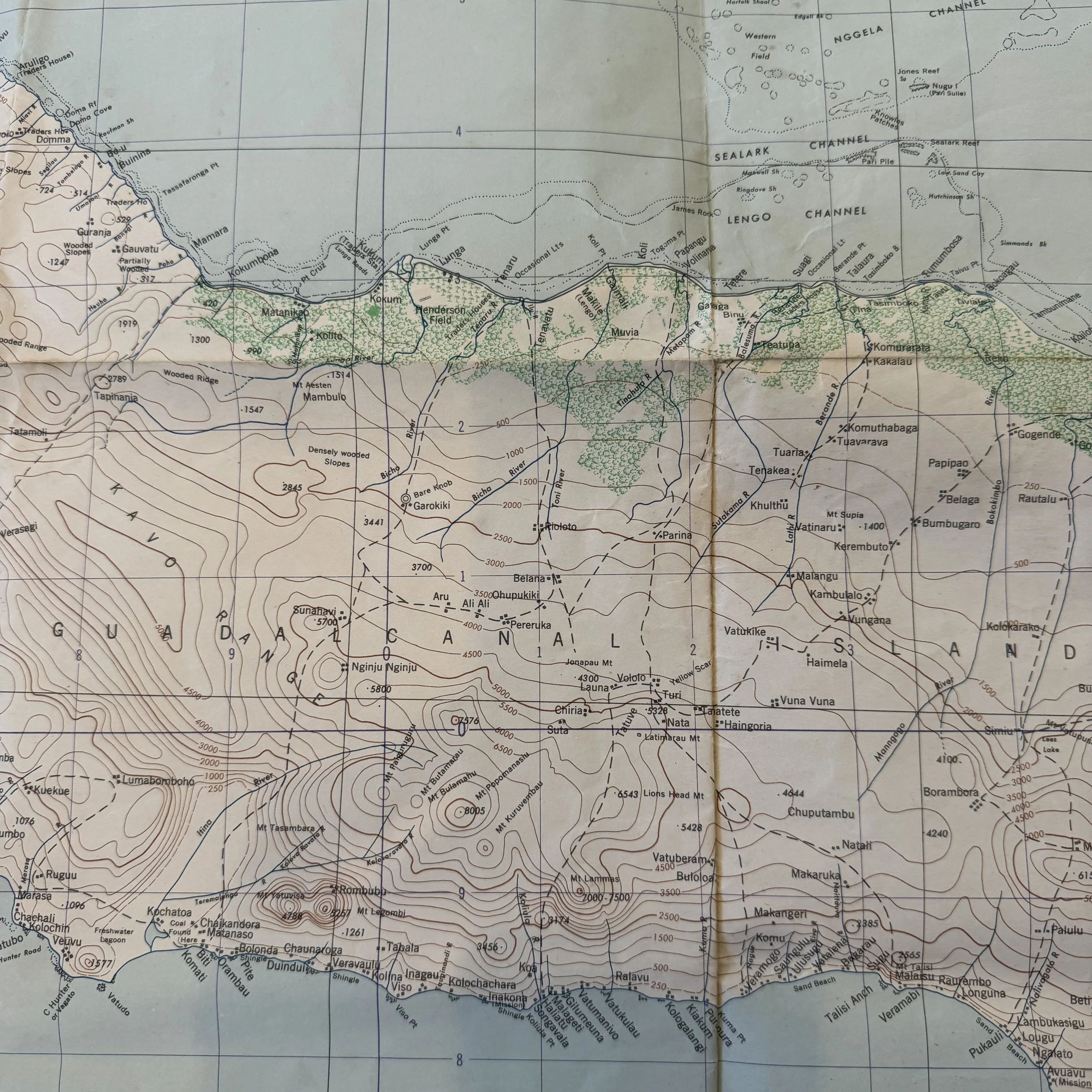
VERY RARE! WWII Battle of Guadalcanal “CONFIDENTIAL” Henderson Field Operation Watchtower U.S. Pacific Theater Combat Map
Comes with hand-signed C.O.A.
This incredibly rare and museum-grade WWII Pacific Theater “CONFIDENTIAL” marked Battle of Guadalcanal combat map shows heavy theater use as it was used during Operation Watchtower. This limited print “ADVANCED EDITION” lays out the entire battlefield of Guadalcanal including all of the D-Day landing beachheads as well as other battlefield locations such as Henderson Field, Edson’s Ridge (Bloody Ridge), Tenaru River (Alligator Creek), Matanikau River, Mount Austen, Cape Esperance, and Koli Point. :, ,
The Battle of Guadalcanal, codenamed Operation Watchtower, was a critical and intense campaign of World War II, marking a pivotal shift in the Pacific Theater. Fought between August 7, 1942, and February 9, 1943, this battle was the first major offensive by Allied forces against the Empire of Japan. It proved to be a grueling test of endurance and strategy, shaping the course of the war in the Pacific.
Background and Strategic Importance
The strategic significance of Guadalcanal lay in its location. Situated in the Solomon Islands, it was poised to become a vital base for controlling the sea routes between the United States and Australia. In early 1942, the Japanese began constructing an airfield on Guadalcanal, which, once completed, would threaten Allied supply and communication lines. Recognizing this threat, the Allied High Command decided to preemptively strike and seize control of the island.
The Allied plan, codenamed Operation Watchtower, aimed to secure the airfield and establish a foothold in the Solomon Islands. This operation was part of a broader strategy to halt Japanese expansion and begin a counter-offensive that would eventually push towards Japan itself.
The Invasion Begins
The invasion of Guadalcanal began on August 7, 1942, with a surprise amphibious landing by U.S. Marines. The initial landing was relatively unopposed, as the Japanese forces were caught off guard and their presence on the island was limited. Within the first 24 hours, the Marines had captured the partially constructed airfield, which they named Henderson Field after Major Lofton Henderson, a Marine aviator killed at the Battle of Midway.
However, the ease of the initial landing was deceptive. The Japanese quickly regrouped and launched a series of counterattacks to retake the airfield. These attacks marked the beginning of a prolonged and brutal campaign for control of the island.
The Struggle for Henderson Field
The battle for Henderson Field became the focal point of the Guadalcanal Campaign. Control of the airfield was crucial for both sides. For the Allies, it provided a base from which they could launch air operations to support ground troops and disrupt Japanese supply lines. For the Japanese, recapturing the airfield was essential to maintaining their strategic advantage in the region.
Throughout the campaign, Henderson Field was subjected to repeated Japanese assaults, both from land and sea. The most significant of these was the Battle of the Tenaru River (also known as the Battle of Alligator Creek) on August 21, 1942. A Japanese regiment launched a night attack on Marine positions, but the Marines, well-prepared and fortified, repelled the attack with heavy losses for the Japanese.
The Japanese Navy also played a crucial role in the battle, attempting to reinforce and resupply their troops on Guadalcanal. This led to several naval engagements, including the Battle of Savo Island on August 8-9, where the Japanese inflicted a severe defeat on Allied naval forces. Despite these losses, the Allies managed to maintain a tenuous grip on Henderson Field, largely due to the efforts of the Cactus Air Force, the name given to the Allied air units operating from the airfield.
Naval Battles and the Struggle for Supremacy
Naval supremacy was a critical aspect of the Guadalcanal Campaign. Both the Allies and the Japanese understood that control of the waters around Guadalcanal was essential for resupplying their ground forces. This led to a series of fierce naval battles, each aiming to establish dominance in the region.
One of the most significant naval engagements was the Battle of the Eastern Solomons, fought on August 24-25, 1942. This carrier battle saw the Japanese attempting to reinforce their troops on Guadalcanal, but they were intercepted by U.S. carrier forces. The battle resulted in heavy losses for both sides, but the Allies managed to prevent significant Japanese reinforcements from reaching the island.
Another pivotal naval battle was the Battle of Cape Esperance on October 11-12, 1942. This nighttime surface engagement saw U.S. forces intercept a Japanese reinforcement convoy. The battle ended in a tactical victory for the Allies, as they sank several Japanese warships and disrupted their supply efforts.
The most intense naval battle of the campaign was the Naval Battle of Guadalcanal, fought from November 12-15, 1942. This multi-phase engagement involved several brutal clashes between surface ships, culminating in a decisive Allied victory. The battle significantly weakened the Japanese fleet and marked the beginning of the end for Japanese efforts to retake Guadalcanal.
The Land Campaign
While the naval battles were crucial, the ground campaign on Guadalcanal was a grueling test of endurance and determination for both sides. The dense jungle terrain, combined with tropical diseases and limited supplies, created harsh conditions for the soldiers.
The Japanese launched several major ground offensives in their attempts to retake Henderson Field. One of the most notable was the Battle of Edson's Ridge (also known as the Battle of Bloody Ridge) from September 12-14, 1942. This intense battle saw a Japanese division attempting to overrun Marine positions on a ridge overlooking the airfield. The Marines, under the command of Colonel Merritt Edson, held their ground despite being heavily outnumbered, inflicting severe casualties on the Japanese forces.
Another significant ground battle was the Matanikau Offensive in October 1942. The Japanese launched a series of attacks along the Matanikau River, aiming to break through the Marine lines and capture Henderson Field. The Americans, however, successfully repelled these attacks, further depleting Japanese manpower and resources.
Turning the Tide
By the end of 1942, the tide of the battle had begun to turn decisively in favor of the Allies. The Japanese, suffering from severe logistical difficulties and continuous Allied pressure, were unable to sustain their efforts to recapture Guadalcanal. The Allied naval and air superiority, combined with the relentless determination of the ground forces, gradually wore down the Japanese resistance.
In January 1943, the Japanese High Command made the decision to evacuate their remaining troops from Guadalcanal. The evacuation, known as Operation Ke, was conducted over several nights from January 14 to February 7, 1943. The Japanese managed to withdraw approximately 10,000 troops, but the operation effectively marked their defeat in the campaign.
The Aftermath and Significance
The Battle of Guadalcanal was a turning point in the Pacific War. It was the first major Allied offensive against Japanese forces and marked the beginning of a series of successful campaigns that would eventually lead to Japan's defeat. The victory at Guadalcanal demonstrated the effectiveness of coordinated land, sea, and air operations, setting a precedent for future Allied strategies in the Pacific.
The battle also had significant strategic and psychological impacts. For the Allies, it boosted morale and proved that Japanese forces could be defeated in sustained combat. For the Japanese, the loss of Guadalcanal marked the end of their expansionist ambitions and the beginning of a defensive war.
In terms of casualties, the campaign was costly for both sides. The Allies suffered approximately 7,100 killed and wounded, while Japanese losses were significantly higher, with estimates ranging from 19,000 to 31,000 killed, wounded, and missing. The high casualty rates underscored the brutal nature of the fighting and the harsh conditions faced by the soldiers.
The Battle of Guadalcanal, or Operation Watchtower, stands as a testament to the resilience, determination, and strategic acumen of the Allied forces in World War II. It was a campaign that involved intense and multifaceted warfare, from brutal ground combat to fierce naval engagements and crucial air battles. The victory at Guadalcanal was a crucial step towards the eventual Allied triumph in the Pacific Theater, marking the beginning of the end for Japanese expansion and altering the course of the war.